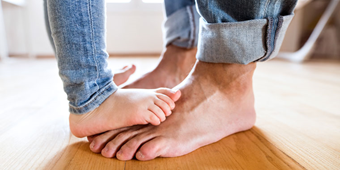Have a Smooth Start Back To School By Planning Ahead

Find Your Perfect Match
Answer a few questions and we'll provide you with a list of primary care providers that best fit your needs.
Making the transitions from summertime freedoms back to the routine of school can be difficult for kids and families. But you can help ease your way back in by planning ahead and taking a few simple steps.
There’s plenty you can do to ease the transition explains Susan Davis-Brown, MD.
Click play to watch the video or read video transcript.
Bedtime can be pushed earlier by half an hour to an hour each night until school bedtime becomes the norm. “Ideally, this should happen a few days before school actually starts. Wake-up time can be done in the same way, only in reverse,” says Dr. Davis-Brown.
Keeping screen time under control and sticking to a reading plan throughout the summer can also help ease back into a school-year routine.
Whether your kids are reading a library book or a comic book, reading throughout the summer can help them not lose what they learned.
Trying to keep screen time to no more than two hours a day is the best option.
Transitions can be different for each child in a family, depending on the child’s personality,” Dr. Davis-Brown says. “Not unlike adults, some children will find no problem going to bed earlier and turning off the screens earlier, and some children and adults will find this challenging.”
Spending time outside is a great way not only to enjoy the weather and get exercise, but also to help everyone avoid the draw of screen time, as well as feel tired and ready for bed earlier.
Another way to help prepare for school as a family is to avoid waiting until the last minute to take care of physicals and vaccines that need updating. You could try taking care of all these things in July so there’s not a rush closer to the new school year.
Back-to-School Anxiety
As you get closer to the start of the new school year, it’s normal for your child to have some anxiety about the shift back to school.
Anxiety is a very common thing that happens to kids returning to school. A friend might have moved, they may have a new teacher, or they’re maybe starting at a brand-new building,” Dr. Davis-Brown says. “Some kids are excited for the school year, as well, and being excited and being anxious can exist in the same child.”
She recommends preparing kids for the new school year as much as possible, which could include:
- Getting backpacks ready the night before
- Laying out clothes the night before to help avoid morning chaos
- Meeting next year’s teachers
- Practicing a locker lock
- Walking through the school building before school starts
For most kids, their anxiety can be curbed by planning ahead and talking through their worries or concerns. But for some, the anxiety can cause too much stress.
If your children complain of physical problems, such as stomach ache or headache that aren’t related to some other kind of sickness, it’s probably worth a visit to their health care provider.
“If a child is having difficulty eating or sleeping, especially before school starts, this is something that also could be discussed with their medical provider,” Dr. Davis-Brown says. “Being sent home from school with physical complaints — most commonly headaches, vomiting, and stomach aches — also probably should be evaluated by your child’s medical professional.”
In rare situations, some children need immediate intervention and might need the help of a counselor. If your children are having such bad anxiety at school that they are having melt downs or can’t make it through the day, it could be time to seek extra help.
“Above all, talk to your kids about their anxiety. It’s not unusual to have anxiety after being off for a break, even if you’re returning to a familiar place,” Dr. Davis-Brown says. “Remember, as a parent, it’s not your job to fix your child’s anxiety, it’s your job to help your child learn to deal with it.”
Find Your Perfect Match
Answer a few questions and we'll provide you with a list of primary care providers that best fit your needs.
Source: Susan Davis-Brown, MD






